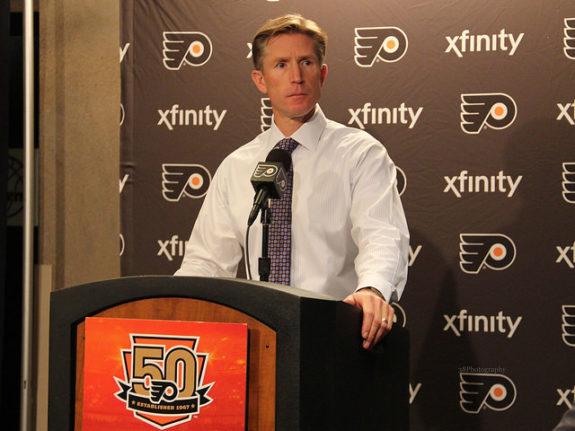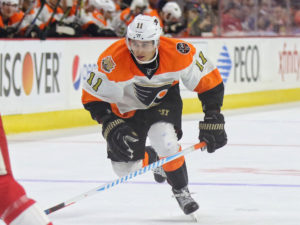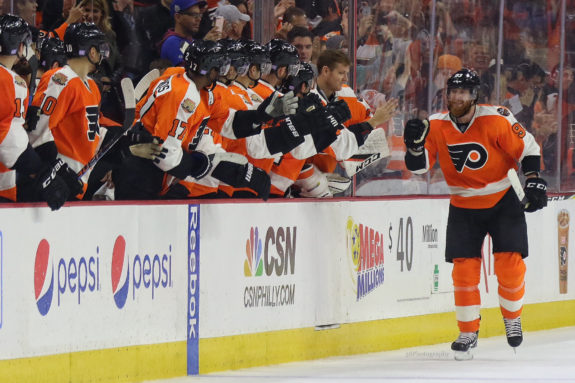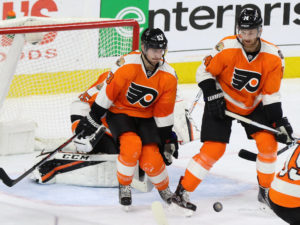The mark of a good head coach is the ability to adapt and adjust to whatever an 82-game schedule throws at him. The up-and-down nature of a long season will inevitably present a series of challenges that must be overcome. A coach’s perception of his team’s strengths and weaknesses in October may not be the same in February or March. Moreover, it will likely take a number of different formulas for success in order to run the gauntlet that is the NHL, and coaches must be wary of becoming one-dimensional.
Line combinations and defensive pairings will be tweaked. At times, strategies and philosophies must be amended. Prospects will get called up from the minors in order to see if they are ready for a full-time position on an NHL roster. Sometimes these experiments fail, other times they turn out better than imagined. The most important thing, though, is that a coach makes these adjustments within the context of his team.
The best coaches are able to find the balance between maintaining the identity of their team while also making necessary changes along the way. Some coaches aren’t always so successful, and as a result they can appear to be grasping at straws. The latter seems to be plaguing the Philadelphia Flyers and head coach Dave Hakstol of late. The Flyers don’t seem to have an identity.
Stop Blaming Young Players
Some of Hakstol’s puzzling coaching decisions were discussed a few weeks ago here at THW while the Flyers limped their way through January. Among them was the benching of defenseman Shayne Gostisbehere and forward Travis Konecny, who once again have seen stints of inactivity over the last few games. Konecny was inserted back into the lineup last night against St. Louis (ultimately departing the game with an injury), but Gostisbehere remained a scratch.

The way the Flyers have played since last week’s evisceration at the hands of the Carolina Hurricanes, the lineup changes involving these two young players were evidently made in an attempt to shore up Philadelphia’s defensive struggles. Gostisbehere has an astounding plus/minus rating of minus-19, and Konecny’s defensive zone start percentage of 42.4 indicates he is not among the Flyers’ most trusted forwards with his back to his own net.
For what it’s worth, Hakstol’s decision to focus on defense has indeed paid off in some regard. The Flyers have only given up four goals in their last three games, and one of those came in Saturday’s overtime loss against the Los Angeles Kings. The catch is, the Flyers have only scored three goals in their last three games, and all of them came in one game. Konecny ranks fifth on the Flyers in points, and Gostisbehere ranks seventh.
The simple truth is that the Flyers don’t have enough depth on the blue line to sustain this defensive success for any significant stretch, and without Gostisbehere and Konecny, their offense is markedly less efficient.

Additionally, Philly’s top three scorers (Claude Giroux, Wayne Simmonds, Jakub Voracek) have a combined plus/minus rating of minus-46. When veteran leaders are allowing their opponents to run rampant on their goalie, it’s preposterous to blame players in their rookie/sophomore years for the team’s struggles. If Hakstol wants the Flyers to improve defensively, fine. But to sacrifice so much on offense and stunt the growth of young players when veterans are equally to blame is just counterproductive.
Accuracy By Volume
So if “defensive juggernaut” is out of the question, what can the Flyers do to find some consistency?
There’s an old phrase in the Marine Corps, primarily used to highlight the misconception that machine gunners are not accurate marksmen. The phrase is, “spray and pray.” In other words: fire off a whole slew of rounds in a short period of time and hope that a few of them hit the target. Maybe now I’m the one grasping at straws by comparing hockey players to infantrymen, but I think the phrase is relevant here.
In the Flyers’ last five wins, they’ve averaged 33.2 shots on goal. In their last five losses, they’ve amassed just 23.8. In the three games since the Carolina loss, when it appears Hakstol finally put his foot down on the team’s defensive shortcomings, they’ve averaged even less than that.

Now, of course, there are going to be nights when an opposing goalie walks on water and he just can’t be beat, as well as nights when he couldn’t stop a deflated beach ball. But the point remains: the Flyers do not have a wealth of offensive firepower. They rely heavily on a handful of players to provide a majority of their scoring, and they can struggle mightily when those players don’t produce. They need to counter this by firing a high volume of pucks on net.
And for most of the season, they’ve done just that. Philly has produced some pretty whopping shot totals throughout the year, with numbers reaching as high as 55 in a shootout loss to Anaheim on Jan. 1. But the recent emphasis on defense being employed by Hakstol has hindered the Flyers’ overall efforts, as offense has consequently taken a back seat even to the players who are on the ice.
You can’t play shutdown defense without shutdown defensemen, and you can’t score when you’re only testing the opposing goalie 23 times per game. Hakstol needs to work on finding a balance for his team before Thursday’s contest with the New York Islanders.
Hustle Tops Talent
The thing about talent that often gets overlooked is that you don’t need it to work hard. The most talented player on the ice is not always necessarily the best player on the ice. And sometimes the line between those two players has nothing to do with ability, and everything to do with hustle.
The 2013-14 New York Rangers are a great example of this. The highest goal-scorer on that team, Rick Nash, only found the net 26 times. The rest of their core was led by players like Brad Richards, Chris Kreider, Derek Stepan and Mats Zuccarello, to name a few. That Rangers team happened to have a few elite players on its roster as well, including Ryan McDonagh and Henrik Lundqvist, so I’m not trying to paint them as a ragtag bunch of over-achievers. It’s just that the way they played and won was so admirable. The 2014 Rangers were a team full of grinders who threw their bodies around, sold out to block shots, and were flat-out relentless in all three zones. In fact, I remember the way that team played even more clearly than I remember the team they lost to in the Stanley Cup Final, the Los Angeles Kings.

The 2016-17 Flyers could learn a lot from that team, because they have a similar collection of blue-collar pieces. If Philly is going to go anywhere, Dave Hakstol needs to find a way to bring that kind of hockey out of the whole team. Play hard in all three zones, block shots, throw hits, and pepper the opposing goalie as many times as possible. Make hustle the Flyers’ identity.
The Flyers have a mountain to climb just to get into the playoffs, never mind what they’ll have to deal with if they get there. From here on out, they will largely be out-manned and out-matched, but that doesn’t mean they have to be out-worked.